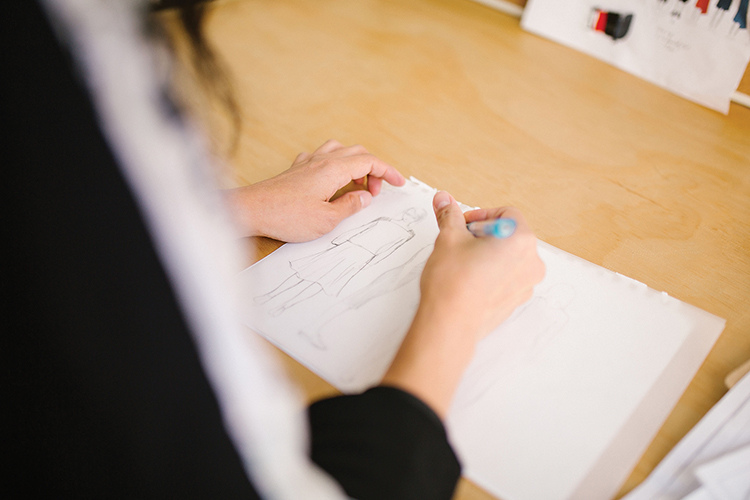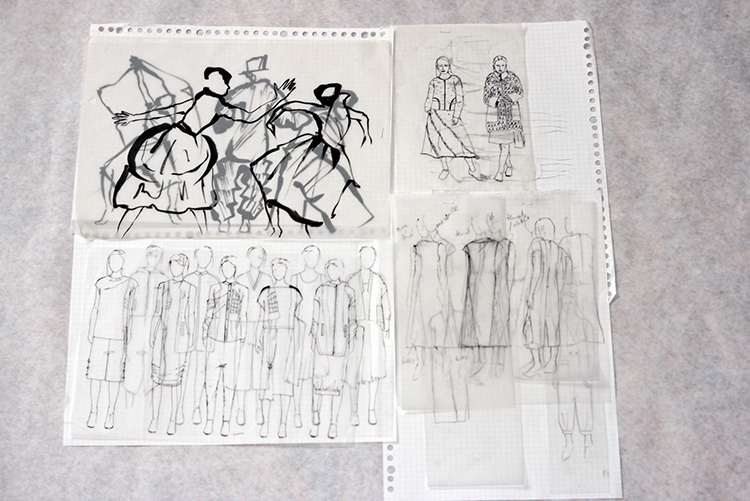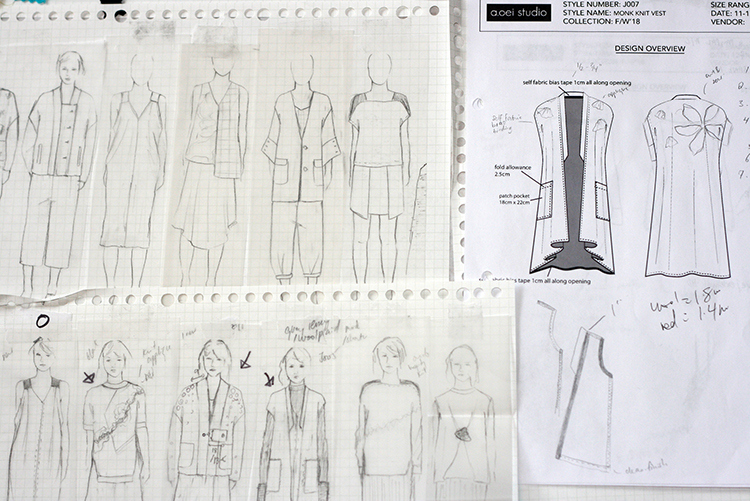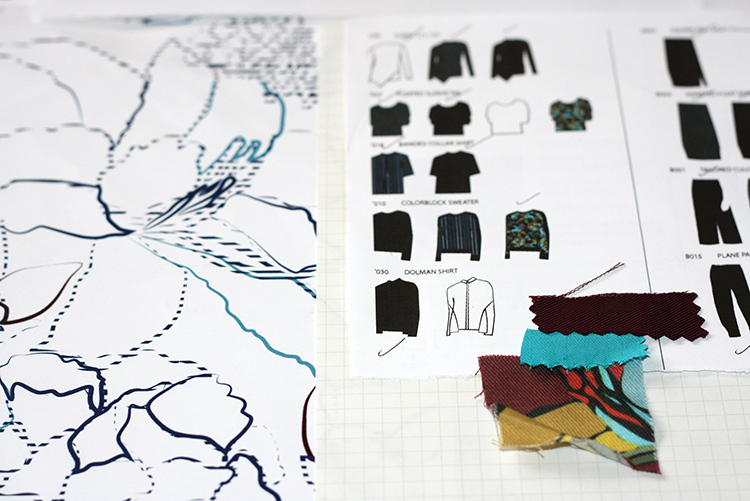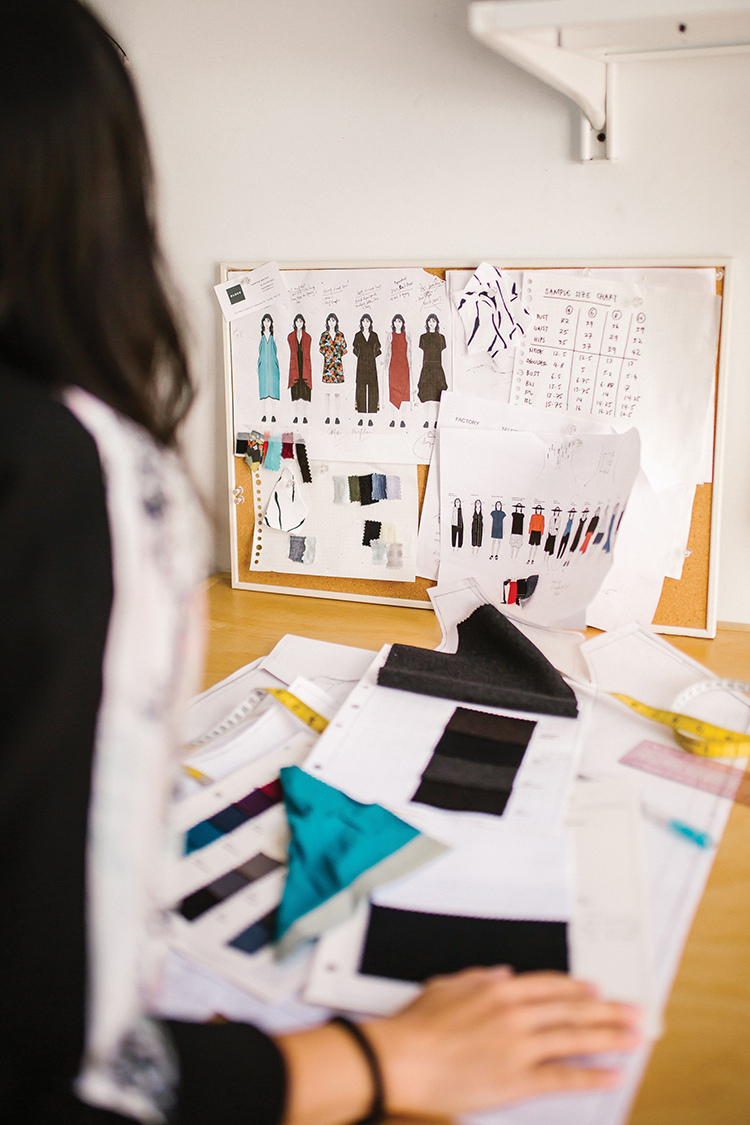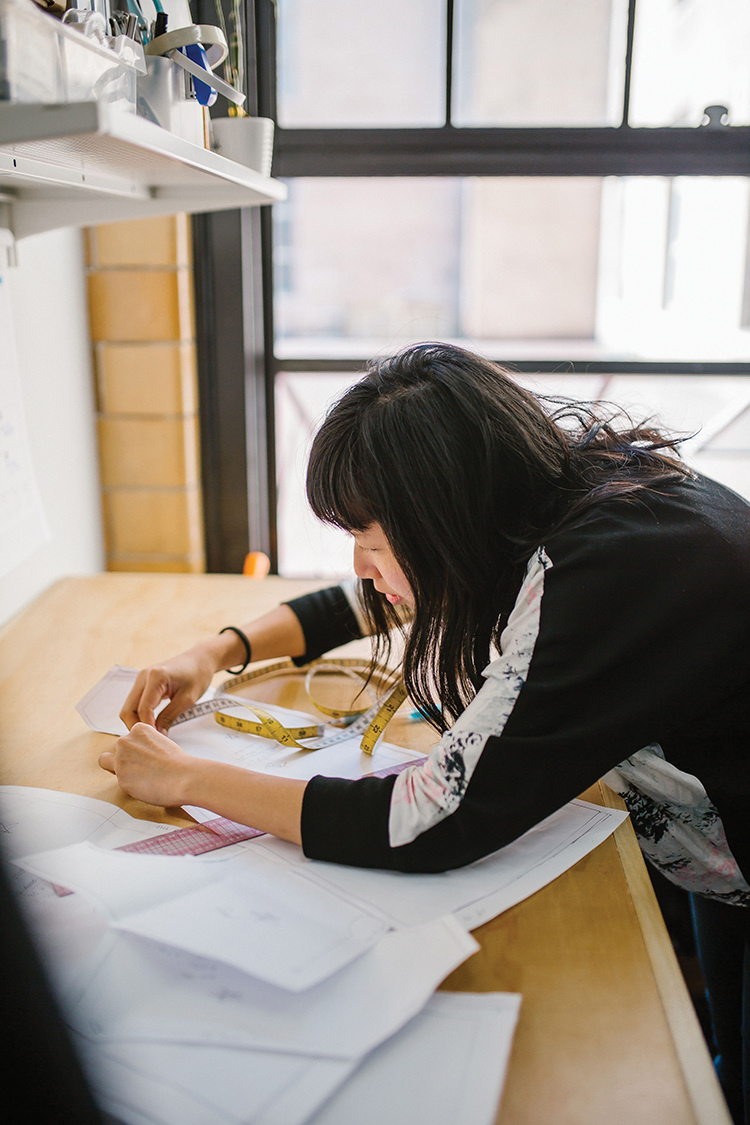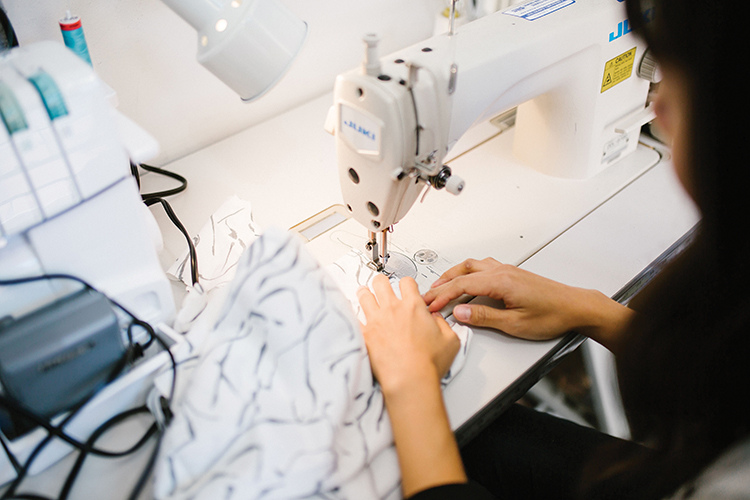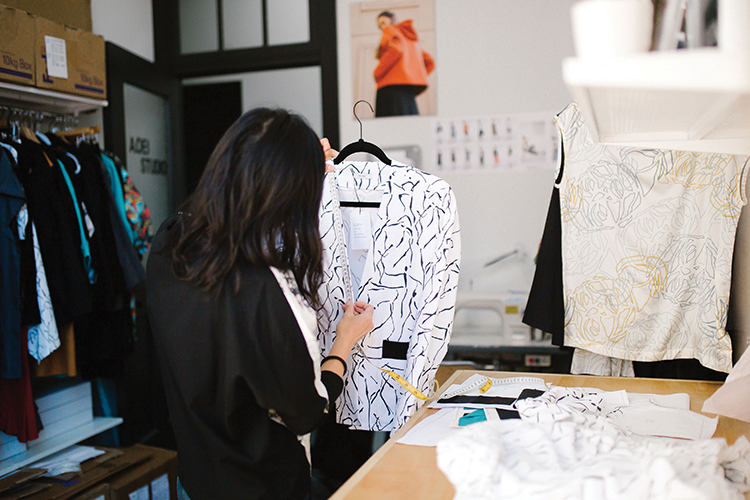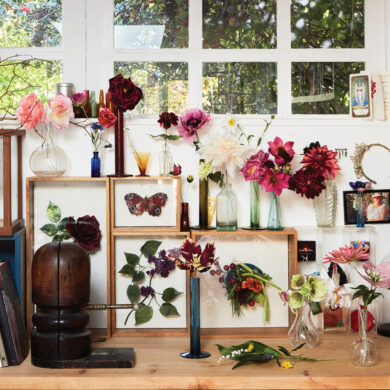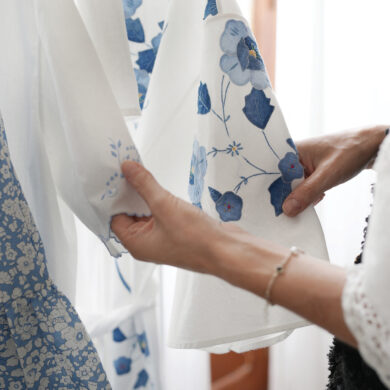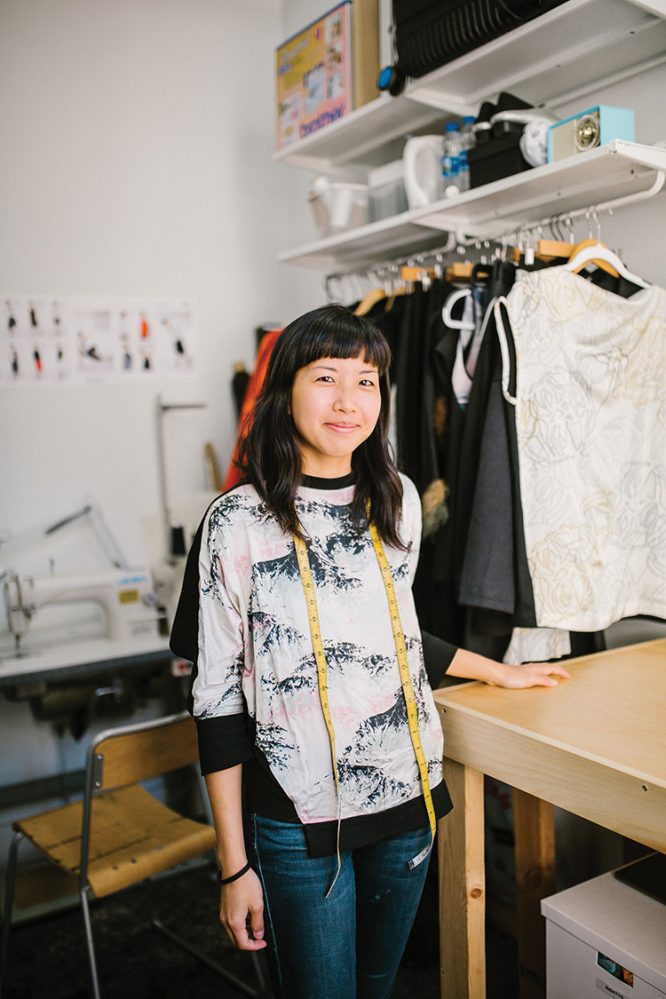
My fascination with fashion started at an early age when I found myself constantly drawing people and what they wore. I believe this interest has to do with the fact that clothing is intimately worn around the body like a “second skin.” I enjoy studying form, movement, color, how the body interacts with cloth, how design can shape and reflect a person’s identity and how materials interact with different physical environments.
Because of the soft and malleable nature of fabric, the process of making a garment is often filled with surprises. A fabric may shift unpredictably under the weight of a needle. It may drape differently from what you draw on paper. It may even shrink or expand under heat. This tactile and three-dimensional quality of clothing keeps the design process unique and ever-changing.
Growing up in Singapore at a time when the creative arts were generally ignored, it never occurred to me that fashion design could be a real profession. After high school, I studied English literature at the National University of Singapore.
During an exchange program in the Netherlands — which was also my first time traveling and living abroad — I visited the Royal Academy of Fine Arts in Antwerp, the famous base of avant-garde visionaries like Martin Margiela and Dries Van Noten. When I first experienced this environment of sewing machines, dress forms and clothing creations by fashion students, the thought of becoming a designer suddenly became a lot more real and apparent.
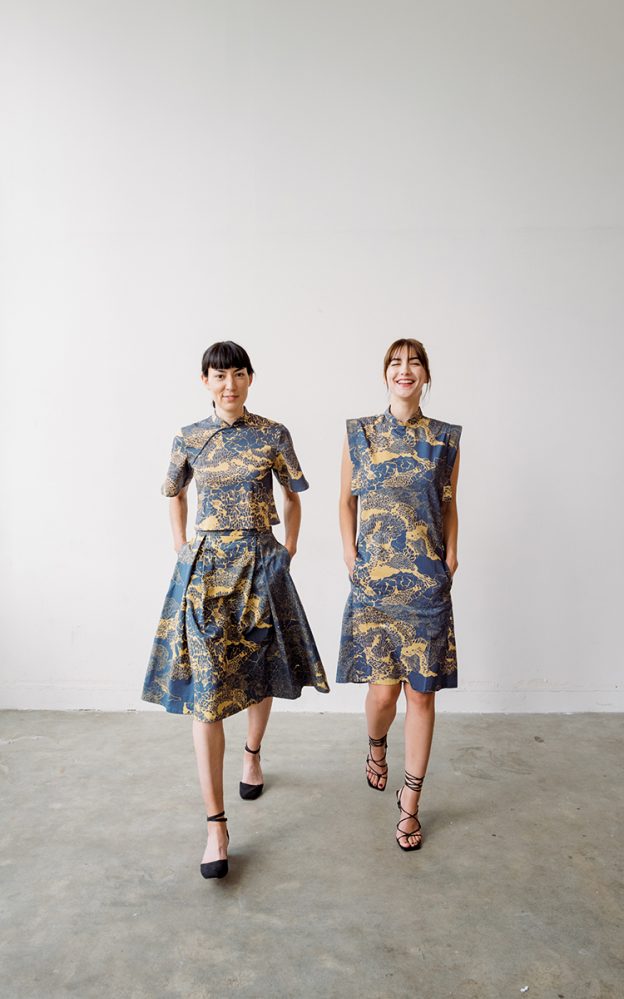
I decided to enter the Amsterdam Fashion Institute in the Netherlands, a country known for its rich textile history and a sober, conceptual approach toward design. At school, I learnt all aspects of fashion — from garment design and textile design (knitting, printing and other forms of application) to pattern drafting, sewing and communication (via illustrations or runway shows).
After graduation, I worked as a designer for fashion companies of different sizes: an independent luxury atelier in Antwerp, where I developed tailoring skills; a minimalist streetwear brand in New York City; and a contemporary ready-to-wear womenswear brand in Singapore, where I was the head print designer and where I started falling in love with the process of creating fabric prints.
I started my own women’s clothing line and fashion practice, A.Oei Studio, in Seattle in 2017. While I learnt a lot as a designer for other ready-to-wear clothing companies, I was not satisfied with simply designing behind a computer screen, disconnected from the production and retail processes. It soon became necessary to work with my hands again and explore sustainable production methods and new interpretations of fashion.
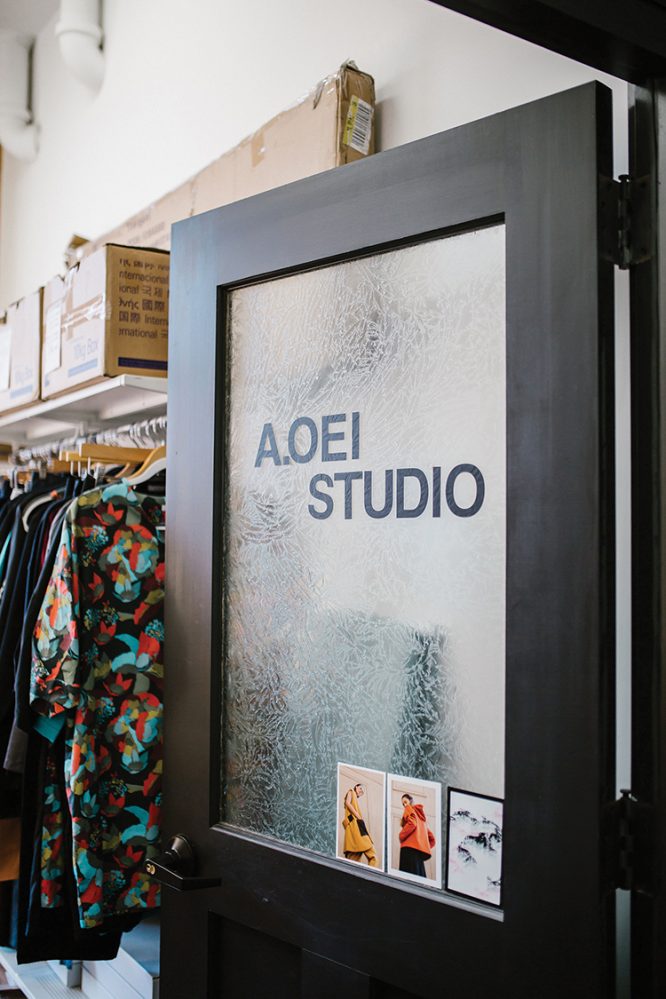
In the early days of A.Oei Studio, I spent close to a year researching and testing different suppliers and manufacturers who could offer high-quality fabrics, high-quality stitching and flexible minimums. Working out a viable production system is a huge challenge for an independent designer unable to commit to large quantities. Learning how to sell clothing was an even greater challenge. As someone who has mostly worked behind the scenes, having to come up with a quick sales pitch for something personal was new to me. Thanks to the experience of participating in popups where I have to physically interact with many people, I have since learnt how to communicate and sell my work in a more genuine manner.
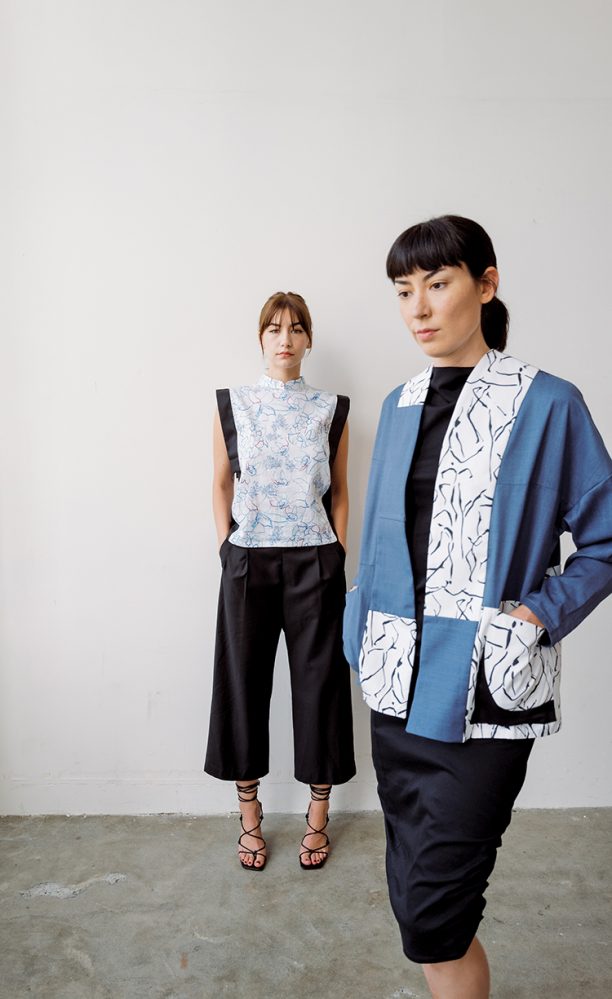
Each bespoke garment is born out of a creative collaboration between the wearer and the maker. I initiate the design concept; she provides feedback and ideas about her personal style. This process ensures a high-quality design with a precise fit and, as such, enhances the usability and life cycle of the garment. End to end, this process offers a timeless, versatile and unique product experience.
My design process usually starts from a concept inspired by art and nature. Whenever I come across an interesting article or image, I save it so that I have a huge archive of inspiration. From the concept, I come up with ideas for colors, shapes and a fabric print.
“Digressions, incontestably, are the sunshine, the life, the soul of reading!”
— Laurence Sterne, Tristram Shandy
Most prints, like the Kinetic Print and Aquatic Print, are hand-drawn and digitally rendered. Because a print is such a visually strong motif that tells stories, it forms the core of every collection. The colors of the print inform the colors of the other designs. The texture of the printed fabric determines the other types of fabrics used. Altogether, it is a fluid process where I think about how the different fabrics and designs work together to reflect a coherent vision.
I primarily use natural and biodegradable fibers like cotton, silk and Tencel Lyocell (a regenerated wood-pulp fiber) sourced from Japan. I choose these fabrics because of their durability and comfort against the skin and because they have a reduced material impact on the environment. I tend to avoid fabrics that are manufactured to fit seasonal trends. Instead, I have a small collection of “timeless” solid-colored twills and A.Oei signature printed cottons and silks. These are tried-and-tested fabrics that I have used repeatedly over the years across a wide range of designs.
The silhouette.
This is usually sketched during the conceptualizing and prototyping stages. Sometimes an idea occurs while I am cutting the cloth or while I am discussing a design with a client or even during random moments like a coffee break. Once a design has been determined, I proceed to draft the paper patterns, which will later be used as a template for the cutting of the fabric. The paper patterns also contain sewing instructions for the seam finishing, closures, etc. Pattern drafting is, in fact, my favorite part of the entire garment creation process. It is the bridge between the idea and the product. During this stage, I start to see the proportions, shapes and all the missing details come to life.
The cutting and sewing of the garment are usually the most straightforward stages, as most of the design details would have already been worked out. What I do enjoy about this process is that I get to physically interact with the fabric — figuring out the right sewing procedures (a very important step!), stitching details, the ironing and steaming of seams. I often drape and sew simultaneously to check how the different panels form around the body, methodically piecing the panels until they form a complete garment.
As much as I am passionate about my craft, I hope the designs fit well and serve a purpose for the wearer. I hope the customer understands the thought and care that go into each piece and that I can continue to develop a bespoke clothing line that offers a sustainable alternative to today’s fashion industry.
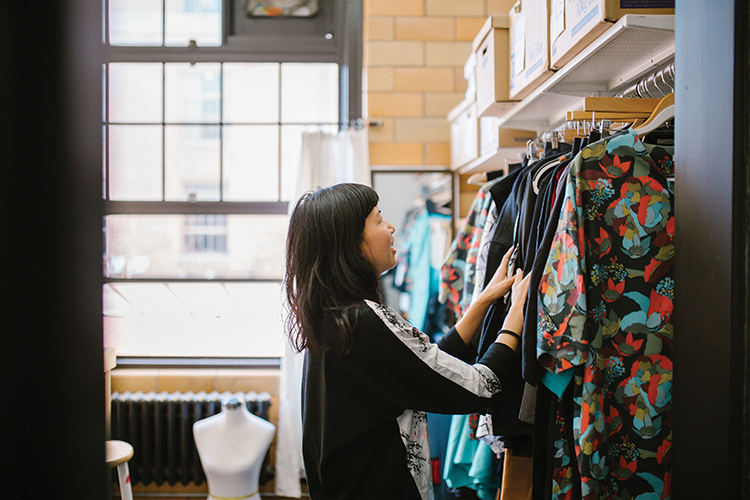

My fascination with fashion started at an early age when I found myself constantly drawing people and what they wore. I believe this interest has to do with the fact that clothing is intimately worn around the body like a “second skin.” I enjoy studying form, movement, color, how the body interacts with cloth, how design can shape and reflect a person’s identity and how materials interact with different physical environments.
Because of the soft and malleable nature of fabric, the process of making a garment is often filled with surprises. A fabric may shift unpredictably under the weight of a needle. It may drape differently from what you draw on paper. It may even shrink or expand under heat. This tactile and three-dimensional quality of clothing keeps the design process unique and ever-changing.
Growing up in Singapore at a time when the creative arts were generally ignored, it never occurred to me that fashion design could be a real profession. After high school, I studied English literature at the National University of Singapore.
During an exchange program in the Netherlands — which was also my first time traveling and living abroad — I visited the Royal Academy of Fine Arts in Antwerp, the famous base of avant-garde visionaries like Martin Margiela and Dries Van Noten. When I first experienced this environment of sewing machines, dress forms and clothing creations by fashion students, the thought of becoming a designer suddenly became a lot more real and apparent.

I decided to enter the Amsterdam Fashion Institute in the Netherlands, a country known for its rich textile history and a sober, conceptual approach toward design. At school, I learnt all aspects of fashion — from garment design and textile design (knitting, printing and other forms of application) to pattern drafting, sewing and communication (via illustrations or runway shows).
After graduation, I worked as a designer for fashion companies of different sizes: an independent luxury atelier in Antwerp, where I developed tailoring skills; a minimalist streetwear brand in New York City; and a contemporary ready-to-wear womenswear brand in Singapore, where I was the head print designer and where I started falling in love with the process of creating fabric prints.
I started my own women’s clothing line and fashion practice, A.Oei Studio, in Seattle in 2017. While I learnt a lot as a designer for other ready-to-wear clothing companies, I was not satisfied with simply designing behind a computer screen, disconnected from the production and retail processes. It soon became necessary to work with my hands again and explore sustainable production methods and new interpretations of fashion.

In the early days of A.Oei Studio, I spent close to a year researching and testing different suppliers and manufacturers who could offer high-quality fabrics, high-quality stitching and flexible minimums. Working out a viable production system is a huge challenge for an independent designer unable to commit to large quantities. Learning how to sell clothing was an even greater challenge. As someone who has mostly worked behind the scenes, having to come up with a quick sales pitch for something personal was new to me. Thanks to the experience of participating in popups where I have to physically interact with many people, I have since learnt how to communicate and sell my work in a more genuine manner.

Each bespoke garment is born out of a creative collaboration between the wearer and the maker. I initiate the design concept; she provides feedback and ideas about her personal style. This process ensures a high-quality design with a precise fit and, as such, enhances the usability and life cycle of the garment. End to end, this process offers a timeless, versatile and unique product experience.
My design process usually starts from a concept inspired by art and nature. Whenever I come across an interesting article or image, I save it so that I have a huge archive of inspiration. From the concept, I come up with ideas for colors, shapes and a fabric print.
“Digressions, incontestably, are the sunshine, the life, the soul of reading!”
— Laurence Sterne, Tristram Shandy
Most prints, like the Kinetic Print and Aquatic Print, are hand-drawn and digitally rendered. Because a print is such a visually strong motif that tells stories, it forms the core of every collection. The colors of the print inform the colors of the other designs. The texture of the printed fabric determines the other types of fabrics used. Altogether, it is a fluid process where I think about how the different fabrics and designs work together to reflect a coherent vision.
I primarily use natural and biodegradable fibers like cotton, silk and Tencel Lyocell (a regenerated wood-pulp fiber) sourced from Japan. I choose these fabrics because of their durability and comfort against the skin and because they have a reduced material impact on the environment. I tend to avoid fabrics that are manufactured to fit seasonal trends. Instead, I have a small collection of “timeless” solid-colored twills and A.Oei signature printed cottons and silks. These are tried-and-tested fabrics that I have used repeatedly over the years across a wide range of designs.
The silhouette.
This is usually sketched during the conceptualizing and prototyping stages. Sometimes an idea occurs while I am cutting the cloth or while I am discussing a design with a client or even during random moments like a coffee break. Once a design has been determined, I proceed to draft the paper patterns, which will later be used as a template for the cutting of the fabric. The paper patterns also contain sewing instructions for the seam finishing, closures, etc. Pattern drafting is, in fact, my favorite part of the entire garment creation process. It is the bridge between the idea and the product. During this stage, I start to see the proportions, shapes and all the missing details come to life.
The cutting and sewing of the garment are usually the most straightforward stages, as most of the design details would have already been worked out. What I do enjoy about this process is that I get to physically interact with the fabric — figuring out the right sewing procedures (a very important step!), stitching details, the ironing and steaming of seams. I often drape and sew simultaneously to check how the different panels form around the body, methodically piecing the panels until they form a complete garment.
As much as I am passionate about my craft, I hope the designs fit well and serve a purpose for the wearer. I hope the customer understands the thought and care that go into each piece and that I can continue to develop a bespoke clothing line that offers a sustainable alternative to today’s fashion industry.







